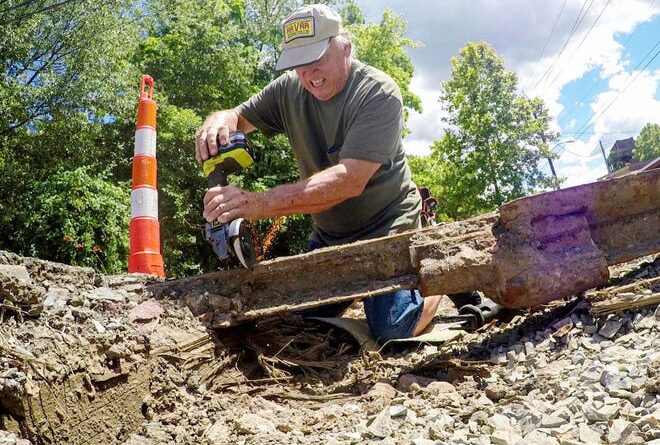Opinion: Streetcars ran in Knoxville for almost 75 years – Knoxville News Sentinel
Robert J. Booker
For a short period of my life I had the opportunity to ride the public streetcars of Knoxville before they went out of business in 1947. I was 12 years old during that last run and have fond memories of those rides and the sounds and smells they brought as the steel tracks took the streetcars to various parts of the city. They were guided by tracks that were embedded in the streets and overhead electric cables that gave them power.
Before they disappeared in 1947, they had operated here in various forms for almost 75 years. Their service began after citizens had visited other cities and experienced the convenience they provided. An editorial in the Knoxville Daily Press of April 28, 1872, expressed their views: “The city of Knoxville is without any street cars – without any regular omnibus line except from the hotels to the Depot. The want of this mode of travel is very apparent to those who are in the habit of trudging to our Market House and back.”

Hear more Tennessee voices:Get the weekly opinion newsletter for insightful and thought-provoking columns.
Four years later, after tearing up Gay Street to lay tracks for the service, the Tribune on April 15, 1876, announced that “The chronic grumblers who have been complaining of the destruction of our beautiful thoroughfare, Gay Street, can cheer up, for the ugly trenches have been filled. The older portion of Knoxville is bound to the new with links of iron.”

That was the first section of Knoxville’s street railway, with several more to come through the years. The Tribune of Feb. 17, 1888, noted that the Dummy Line was making trial runs on Magnolia Avenue, “The most beautiful Avenue in the entire country.” The Knoxville Real Estate Company had purchased several hundred acres of land east of the city, improved it and saw to the construction of an iron bridge over the tracks of the East Tennessee Railroad and First Creek. The Dummy Line ran 3 miles, from the Atkin House on Gay Street out East Magnolia.
“The Dummy Line has a smoke consumer and the smoke is reduced to a minimum and there are no cinders at all. The run of three miles was made in about fifteen minutes, including several stops. The company has made it first class in every particular. The best sawed oak ties have been used upon which sixty pound steel rail had been placed. The cars run smoothly and without noise,” said the Tribune.
The Tribune of Jan. 23, 1891, reported even more extension of streetcar lines: “An ordinance has been passed on second reading by the West Knoxville City Council giving the West End Street Railroad Company the right of way over a number of streets in that corporation. It is also the understanding that the South Knoxville Railroad Company anticipates some practical work before a while. This company was recently chartered to build a suburban railroad south of the river.”
By 1924 the streetcar system had improved dramatically. Gone were the horses that originally pulled them and the steam engines that propelled them. The Tribune of June 8, 1924, had a photograph of the “comfortable, modern safety car now running in Knoxville.” Introduced by the Knoxville Power and Light Company, the new cars were said to be the finest that money and science could produce.
The old trollies were cold, with hard seats for only 12 passengers sitting on wooden benches. The floors were covered with straw and sawdust to help keep their feet warm. The new cars were electric with heat and comfortable seats.
Robert J. Booker is a freelance writer and former executive director of the Beck Cultural Exchange Center. He may be reached at 865-546-1576.
